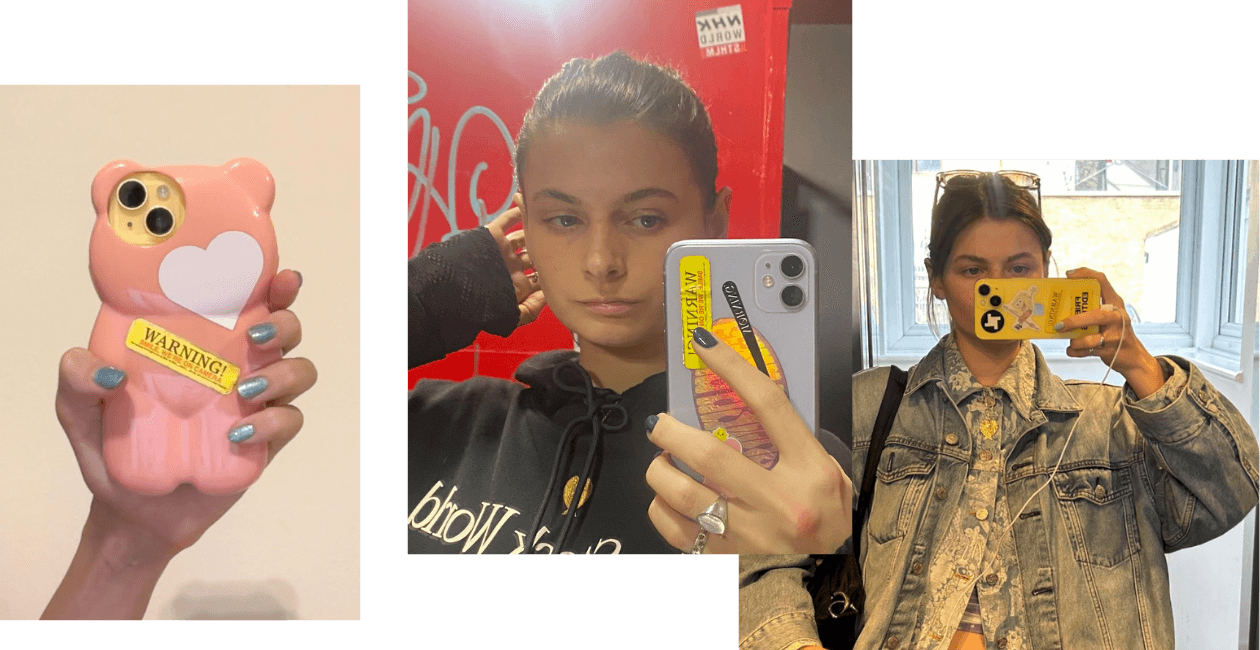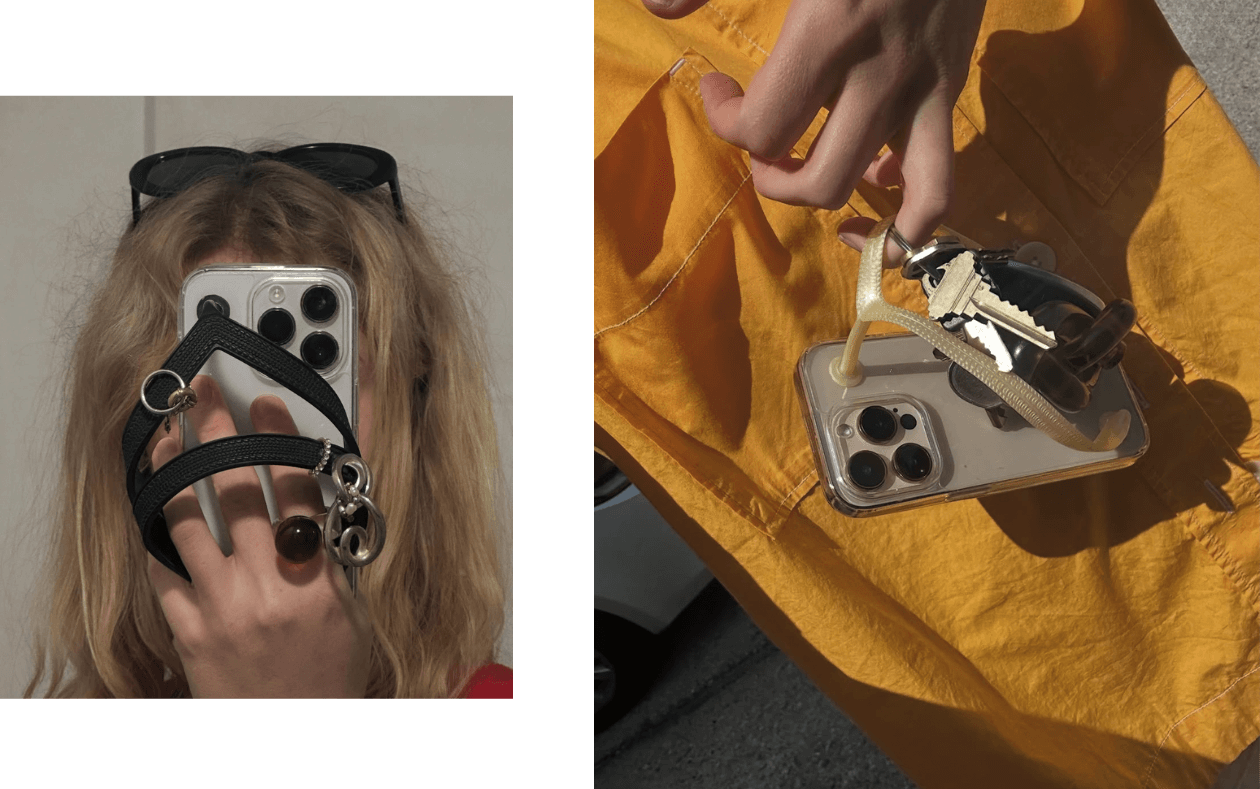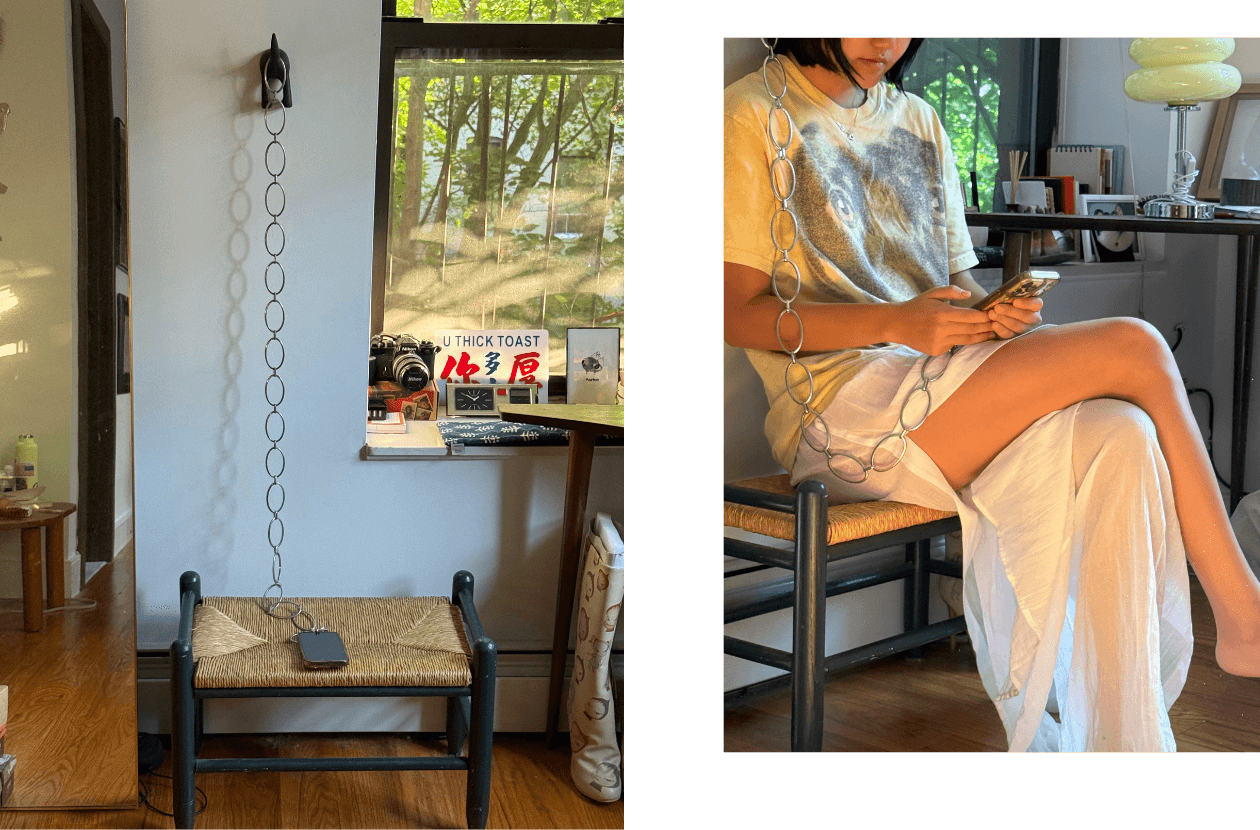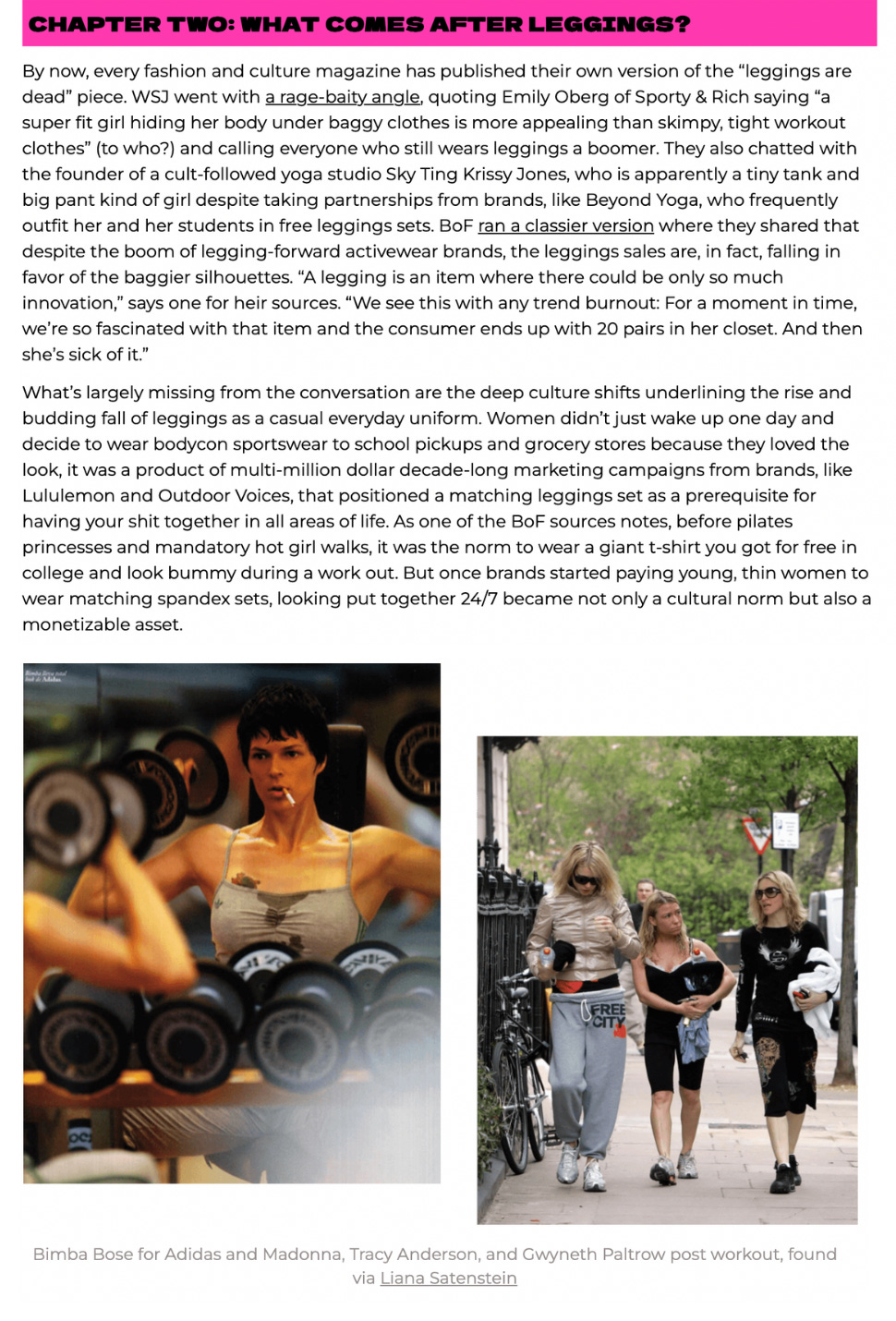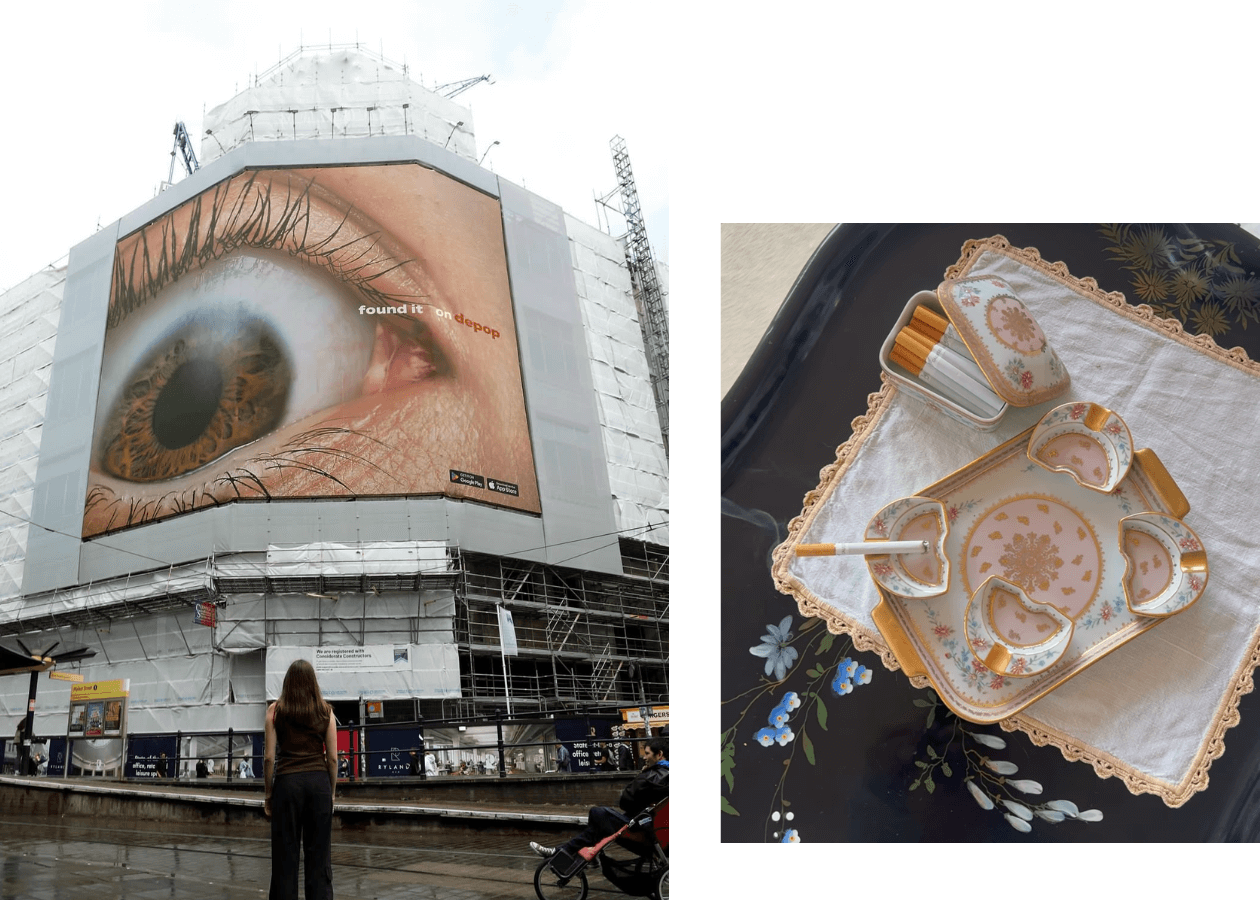I <3 My Phone
On customization, Flip Phones, and (literally) chaining an iPhone to a wall
With the exception of the foldable smartphone, hardly ever spotted in the wild, the design of phones as objects has stagnated. Having reached its optimal form — a thin metal brick with a screen and a camera — hardware designers tapped out to place their bets in the race for the next big thing. For some, that means tactile nostalgia: light phones, flip phones, even landlines. For others — an invisible AI companion. Both assumed that given the constant collective fight for less screen time, people would be eager to move forward from smartphones, and yet, the emotional and physical attachments we’ve developed with these seemingly dull objects continue to overpower the overwhelmingly negative sentiment around the things they enable.
“Many see phones as much an accessory as they do a tool,” London-based creative and digital director Emily Chapps told me. I heard a variation of this take in every conversation I’ve had trying to figure out why despite the widespread hatred of screens and their impact on creativity, relationships, and culture, we seem to be pouring more and more time and money into smartphone accessories and modifications. Wildflower Cases — a brand that felt like an influencer cash grab at inception — now operates like a commercially sustainable fashion business with consistent creative direction, celebrity collaborations, and a fleet of unpaid ‘it girl’ ambassadors. Rhode’s lip balm holder — a product that first came across as lighting in a bottle — has joined the brand’s permanent lineup. And a quick look at Casetify’s website overwhelmed me with opportunities for customizations: snap-ons, hooks, and adhesive toys for every inch of a smartphone’s surface.
It’s tempting to write this off as another manifestation of the hyper-individualization phenomenon that’s currently dominating the broader cultural landscape. “Like any other fashion item, [phones] are at the mercy of trends,” suggested Emily. And yet, while there is certainly truth to that, a brief walk down her own hardware history suggests something more layered. At the moment, Emily is repping a £2 phone case shaped as a pink chubby bear that she scored at Primark after nearly eight years of letting her phones hang naked, covered in a rotating array of stickers: SpongeBob, Mr. Sparkle, the yellow dots Berlin bouncers put on cameras at nightclubs, and merch from Friend Editions and “Warning! Camera,” among other things. She comes across as both excited and consistently intentional about the way she decorates her phones — it almost felt like she was giving me a tour of her tattoos.
“The rise of customization and personalization speaks to something deeper: our innate desire to see ourselves reflected in the objects we carry,” theorized Maxine Midtbo, the multidisciplinary artist behind Memor Studio that is known for its mosaic-inspired home decor objects and bespoke phone cases. “The truth is I never would have imagined I’d be making phone cases,” Maxine explained. “To this day it feels strange to say “yeah, I make vases, lighting, furniture….and phone cases”, it’s an outlier. But over the past 5 years we’ve been making the cases I’ve been increasingly interested in integrating [them] conceptually with the rest of my work.”
In her latest project, called 100 Cases, she creates conceptual not-for-sale phone cases as a sculptural warm up and an art practice that allows her to push the limitations of commercial design. In the past year, she’s made a marine-themed phone case that doubles as a watercolor pallet, a candle case that she lit up for the studio’s sixth birthday, and more recently, a Flip Phone case that featured a pearly strap from a pair of Havaianas. The latter hit the fashion girls’ feeds right at the inception of the flip flop craze this summer, and by popular demand, Maxine opened it up for orders. Madolyn Schultz, Head of Community and Social at Hanni whom I met earlier this year, managed to snag one. “For lack of better words, it made me feel very "seen,” she told me. “I thought it was funny, a little absurd, not taking itself too seriously but also a little IYKYK as a fellow fashion girlie turned flip flop enthusiast.”
Memor customers tell Maxine that their phone cases often serve as conversation starters sparked by strangers, which is ironic, given that smartphones are also one of the key drivers of the “loneliness epidemic.” Even something silly and simple, like the Sonny Angel that Emily used to have on one of her naked phones loosens people up: “[it was] a favorite of cashiers and waiters when I used contactless, as I’d often joke about the bills on Angel,” she said. “Most adults have a cell phone, it’s an interesting shared connection in our contemporary reality as a frequently used and held object,” Maxine noted about this contradiction. “That, to me, is where [Memor Studio’s] work lives, at the intersection of personal narrative and collective experience.”
Funny enough, a staple Memor case was also recently featured in a viral post from someone sharing the way they created some much needed separation from their smartphone by hanging it up on a kitchen wall — Maxine’s beautiful mosaic made it blend seamlessly with the rest of the home decor. This wasn’t the first time I saw something like this either. A few weeks ago, writer Tiffany Ng published a fascinating account of chaining her phone up to a wall for a week which not only sounded like a fun experiment but also looked chic — a mobile invention immobilized by a metal chain, resting on a straw bench beneath it. “You can try all kinds of dark patterns to trick yourself into spending less time online, purchase new gadgets to protect your phone from yourself. But you could also just chain it up,” she noted. “I know it’s a little medieval, but who doesn’t love some drama?”
The truth is, despite all the negative talk, people cherish smartphones as objects. We go to great length to protect them and can’t help but be deliberate about the way they look and what they communicate about us simply because they are objects we see and are seen with daily. On the one end of the spectrum, there is someone like fashion aficionado Georgia Graham who can write a whole newsletter about searching for a chic way out of the hard case of European phone snatcher scaries that she caught last summer. “My phone paranoia was having a detrimental effect on my overall vibe,” she noted. “Turns out a good outfit doesn’t mean sh*t if you behave like a coked up meerkat every time you leave the house.” But as Emily put it, even those who are impartial to fashion and style and allergic to self-expression aren’t immune to at least sliding a polaroid of their friends, family, or lover under a basic 3M clear case.
“With their 2–4 year contract periods, iOS updates, and law-backed charging port changes, [phones] have turned into relics of an era of your life. Like a holiday, they bookend the start and end of a period, holding memories from that time,” she concluded. “I still have my past four phones (with chargers) and sometimes revisit them for a bit of reminiscence…I also have the phone of my late father, which is honestly a really great way to remember him.”
Whether intentional or not, we treat smartphones as special objects. We may dream about the life before and after them, but we are also terrified of losing them, for the texts and voice memos they store, the scratches and cracks they endure, and all the intangible parts of our lives that they are able to contain. After all, they may be the last adequately tangible objects that embody the increasingly digital world around us, and that is not something that is easy to move forward from.
IN THE MARGINS
Thank you for all the love on the Post Wellness Report! Reminder that there are two more chapters about what comes after leggings and the blurry line between health and beauty here.
30+ new additions to Busy Corner will be up this weekend — references, talent, objects, magazines, and more.




